Mínimo de tiempo máxima concentración ♟️️🔥⚡️
3
About :

Español
Normalmente cuando se habla de partidas de ajedrez se tiende a pensar que estos matches significan largas jornadas de inmutable quietud, lo cual es un razonamiento totalmente valido, la producción de “Partidas Inmortales” han sido el fruto de muchas horas de ardua competición, no obstante vemos que desde la invención del reloj como control de tiempo en los juegos de ajedrez, se ha ido experimentando con distintos ritmos, algunos más lentos y otros por el contrario más “explosivos”. Este ultimo conjunto el cual denominaremos “ritmos rápidos” han despertado la atención de nuevos aficionados y personas en general. En este post realizaré una comparativa entre el ajedrez y otras disciplinas contrastando las duraciones de los juegos y como esto repercute en los espectadores de las disciplinas en cuestión.
Conceptos claves
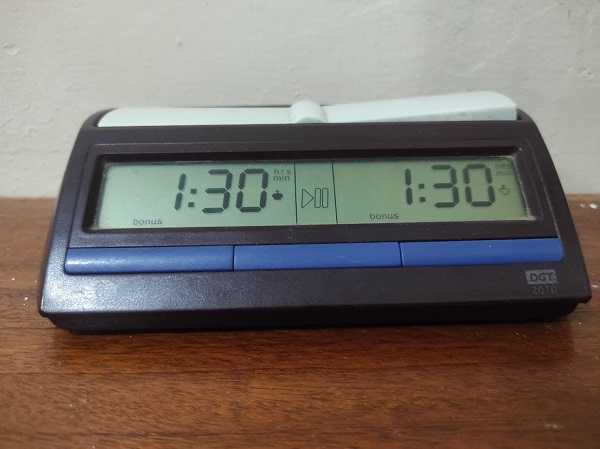
Reloj de Ajedrez - imagen del autor
-Ajedrez Clásico: Se refiere al ritmo de juego en el que cada jugador posee como mínimo una hora en su reloj, normalmente se suele añadir un incremento por jugada realizada de 30 segundos, en promedio estas partidas clásicas pueden durar unas 5, 6 horas o incluso más.
-Ajedrez Rápido: En este ritmo el tiempo de reflexión es más reducido, siendo los controles de 5 minutos o inferiores los más populares. De hecho, hay una ritmo de juego denominado “bala” el cual comprende tiempos por debajo del minuto para cada jugador.
Atendiendo lo anteriormente dicho, tiene sentido este planteamiento, el consumo de información en estos días apunta a tiempos de atención bastante reducidos; el deporte no escapa a este concepto de “brevedad” y no me refiero solamente al atleta sino más bien a la perspectiva de un fanático que consume el espectáculo generado por atletas elite que han invertido incontables horas de preparación. Un ejemplo claro es la carrera de los 100 metros planos cuya duración promedio es de 10 segundos, para una gran audiencia, estos 10 segundos suponen una euforia tremenda, pero ¿que tanto puede pasar en tan ínfimo periodo de tiempo?, la verdad es que muchísimo, no se puede describir con palabras lo espectacular que resulta ver a los atletas dándolo todo en esos mínimos instantes.
En efecto, hay más disciplinas que poseen ese ratio: -mínimo de tiempo vs atracción máxima.
En 2015 asistí a los Juegos Mundiales IBSA en Corea del Sur, yo por supuesto iba a jugar ajedrez pero me acompañaban jugadores de otras disciplina; algo que me llamó poderosamente la atención fue la competencia de Judo, mientras que mi equipo de ajedrez debía competir durante 6 a 7 horas al día durante dos semanas los atletas de Judo desempeñaron su jornada en tan solo un día, esto por supuesto me dejó perplejo. Fui a ver uno de los enfrentamientos y me di cuenta que cada combate duraba al rededor de unos 5 minutos. Solo 5 minutos pero con las gradas a tope; fue en ese momento que entendí el ratio -mínimo de tiempo máxima fanaticada.
Juegos Mundiales IBSA 2015 Corea del Sur - Imagen del autor
Dentro de este orden de ideas, es evidente que aquellas disciplinas que involucren un mínimo de tiempo para el espectador tendrá una recepción bastante positiva, claro está, hay más elementos en la formula pero en este articulo se destaca principalmente ese concepto de: “menos es más”. Como punto añadido, tiene toda la lógica del mundo que para la transmisión de los juegos olímpicos la mayoría de las disciplinas presentes se desarrollen relativamente rápido.
Me parece oportuno entonces tomar la referencia de la duración total de los juegos olímpicos que es más o menos de 17 días o 408 horas distribuidas entre 33 deportes, sacando cuentas en promedio serían unas 12 horas de competencia por cada disciplina, ciertamente, no todas las disciplinas compiten durante todo este tiempo pero para hacernos una idea, 408 horas de ajedrez clásico serian más o menos unas 68 partidas y para jugar 68 partidas continuas (nadie en su sano juicio), a una por día serían 68 días de competición, una cantidad absurda de tiempo. Un jugador de ajedrez con perspectivas competitivas serias y dependiendo de cuan frecuente juegue partidas de torneo gastaría más de un año en jugar 68 partidas clásicas, mucho tiempo poca fanaticada. Los organizadores de los eventos deportivos más trascendentes lo tienen claro, los tiempos de competencia deben ser comercialmente atractivos.
Por consiguiente, el ajedrez “mainstream” empieza a adaptarse a esta nueva tendencia de la reducción del tiempo de reflexión, si bien es cierto que los campeonatos de más importancia se siguen definiendo por ritmos clásicos, los ritmos rápidos empiezan a posicionarse como serios candidatos que atraigan la atención de un publico más amplio. Con el auge de los E-sports, las modalidades de tiempo en ajedrez han tomado omo protagonistas los ritmos rápidos, siendo el “3+2” uno de los fundamentales a la hora de jugar por internet y también en eventos presenciales. Una partida de esta naturaleza tiene una duración de 10 minutos aproximadamente, una reducción de tiempo bastante considerable con respecto al ajedrez clásico, aunque hay un ritmo aún más “atractivo” para un espectador: El ajedrez bala.
Se trata de un control de tiempo en el cual los jugadores deben tomar decisiones cruciales en unos instantes, la agilidad necesaria para triunfar en partidas de 1 minuto es abrumadoramente grande, como en la carrera de los 100 metros planos cuya duración es de 10 segundos , el atleta se ha preparado debidamente para ese momento y la poca duración de la ejecución no significa poca técnica, de hecho, durante una partida de un minuto el ajedrecista debe procesar una alta cantidad de información, se puede decir que en este escenario “están pasando muchísimas cosas”. Es por ello que ese tipo de espectáculo es sumamente atrayente, quizás las personas no entiendan lo que está pasando en el tablero pero el hecho de mover piezas en fracciones de segundo es muy llamativo, a fin de cuentas eso es lo que la gente quiere ver, una contienda entre dos rivales, cosa que en los ritmos clásicos no es tan notoria.
Objetivamente hablando, en el ajedrez clásico hay una probabilidad más baja de cometer errores por lo que se dice que partidas de esta naturaleza tienden a ser más correctas, el ajedrez rápido por el contrario tiende a ser más caótico con una más amplia posibilidad de errores, no obstante es precisamente esa “introducción del error” que dota de belleza a este juego. Dentro de la comunidad ajedrecista hay un interminable debate de los ritmos de juegos, unos prefieren los ritmos lentos, otros los más rápidos, en fin para gustos los colores. En cuanto a la competitividad, el ajedrez clásico permite que los ajedrecistas tengan mayor tiempo de reflexión por tanto la partida es más limpia, sin embargo, esto es un hilo del cual tirar pues en los últimos años los empates de las partidas clásicas de elite han aumentado mucho y esto no resulta muy atractivo, en cambio al existir más errores en las partidas rápidas el resultado de victoria es más probable, de hecho, Magnus Crlsen ha asegurado que el Blitz (ajedrez relámpago) es su ritmo favorito y que este pudiera ser el futuro del ajedrez.
Pienso que desde el punto de vista de masificación del ajedrez y demás aspectos comerciales los ritmos rápidos son ideales, en cuanto al ajedrez de alta competencia los ritmos lentos deberían seguir siendo la norma. Ya veremos como evoluciona este tema en los próximos años.
En el video realizo una demostración de ajedrez bala y explico al detalle esta modalidad.
Hasta acá la entrada de hoy, deseándoles el mayor de los éxitos a toda la comunidad de @fulldeportes y miembros afiliados. Continuamos en una próxima oportunidad, saludos.
English
Normally when we talk about chess games we tend to think that these matches mean long days of immutable stillness, which is a totally valid reasoning, the production of "Immortal Games" have been the fruit of many hours of arduous competition, however we see that since the invention of the clock as time control in chess games, it has been experimenting with different rhythms, some slower and others on the contrary more "explosive". This last set, which we will call "fast rhythms", have awakened the attention of new fans and people in general. In this post I will make a comparison between chess and other disciplines contrasting the duration of the games and how this affects the spectators of the disciplines in question.
Key concepts

-Classical Chess: It refers to the pace of play in which each player has at least one hour on his clock, usually an increment per move of 30 seconds is usually added, on average these classical games can last about 5, 6 hours or even more.
-Rapid Chess: In this rhythm the thinking time is shorter, being the most popular controls of 5 minutes or less. In fact, there is a pace of play called "bullet" which comprises times below one minute for each player.
Considering the above, this approach makes sense, the consumption of information these days points to quite short attention spans; sport does not escape this concept of "brevity" and I am not referring only to the athlete but rather to the perspective of a fan who consumes the spectacle generated by elite athletes who have invested countless hours of preparation. A clear example is the 100 meter flat race whose average duration is 10 seconds, for a large audience, these 10 seconds are a tremendous euphoria, but how much can happen in such a short period of time, the truth is that a lot, you can not describe in words how spectacular it is to see the athletes giving their all in those tiny moments.
Indeed, there are more disciplines that possess that ratio: -minimum time vs maximum attraction.
In 2015 I attended the IBSA World Games in South Korea, I of course was going to play chess but I was accompanied by players from other disciplines; something that caught my attention was the Judo competition, while my chess team had to compete for 6 to 7 hours a day for two weeks the Judo athletes performed their day in just one day, this of course perplexed me. I went to watch one of the matches and noticed that each bout lasted about 5 minutes. Only 5 minutes but with the stands at full capacity; it was at that moment that I understood the ratio - minimum time maximum fans.
Within this order of ideas, it is evident that those disciplines that involve a minimum of time for the spectator will have a very positive reception, of course, there are more elements in the formula but this article highlights mainly the concept of: "less is more". As an added point, it makes perfect sense that for the transmission of the Olympic Games most of the disciplines present are developed relatively quickly.
It seems appropriate then to take the reference of the total duration of the Olympic Games, which is more or less 17 days or 408 hours distributed among 33 sports, taking into account an average of 12 hours of competition for each discipline, certainly, not all disciplines compete during all this time but to get an idea, 408 hours of classical chess would be more or less 68 games and to play 68 continuous games (nobody in his right mind), at one per day would be 68 days of competition, an absurd amount of time. A chess player with serious competitive prospects and depending on how often he plays tournament games would spend more than a year to play 68 classical games, too much time and not enough fans. The organizers of the most transcendent sport events have it clear, the competition times must be commercially attractive.
Therefore, the "mainstream" chess begins to adapt to this new trend of reducing the time of reflection, although it is true that the most important championships are still defined by classical rhythms, the fast rhythms are beginning to position themselves as serious candidates to attract the attention of a wider audience. With the rise of the E-sports, the chess time modes have taken as protagonists the fast rhythms, being the "3+2" one of the fundamental ones at the time of playing on the internet and also in face-to-face events. A game of this nature has a duration of approximately 10 minutes, a quite considerable reduction of time with respect to classical chess, although there is an even more "attractive" rhythm for a spectator: Bullet chess.
It is a time control in which players must make crucial decisions in a few moments, the agility needed to succeed in 1 minute games is overwhelmingly large, as in the 100 meters race whose duration is 10 seconds, the athlete has been properly prepared for that moment and the short duration of the execution does not mean little technique, in fact, during a one minute game the chess player must process a high amount of information, it can be said that in this scenario "a lot of things are happening". That is why this type of spectacle is extremely attractive, perhaps people do not understand what is happening on the board but the fact of moving pieces in fractions of a second is very striking, after all that is what people want to see, a contest between two rivals, something that in classical rhythms is not so noticeable.
Objectively speaking, in classical chess there is a lower probability of making mistakes so it is said that games of this nature tend to be more correct, fast chess on the contrary tends to be more chaotic with a wider possibility of errors, however it is precisely this "introduction of error" that gives beauty to this game. Within the chess community there is an endless debate about the rhythms of games, some prefer the slower rhythms, others the faster ones, in short, to suit all tastes. As for competitiveness, classical chess allows players to have more time for reflection and therefore the game is cleaner, however, this is a thread to pull because in recent years the draws of the elite classical games have increased a lot and this is not very attractive, however, as there are more errors in the fast games the result of victory is more likely, in fact, Magnus Crlsen has said that the Blitz (blitz chess) is his favorite pace and that this could be the future of chess.
I think that from the point of view of chess massification and other commercial aspects fast rhythms are ideal, as for high competition chess slow rhythms should remain the norm. We will see how this issue evolves in the coming years.
In the video I make a demonstration of bullet chess and explain in detail this modality.
So this is all for today, wishing the best of success to the entire community of @fulldeportes and affiliated members. We will continue in a next opportunity, greetings.
Victor Abiad, [08/11/2021 19:51]

Tags :
Their limit for today is $0!

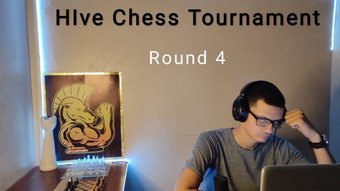


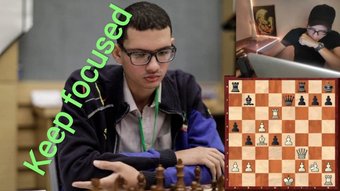
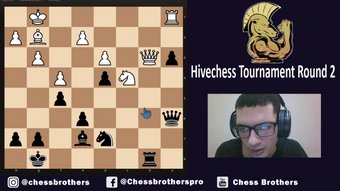







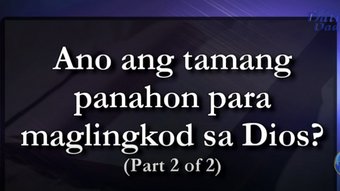

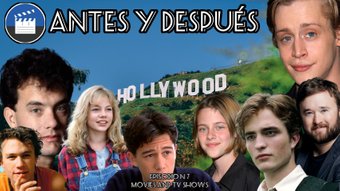














Comments:
Reply:
To comment on this video please connect a HIVE account to your profile: Connect HIVE Account